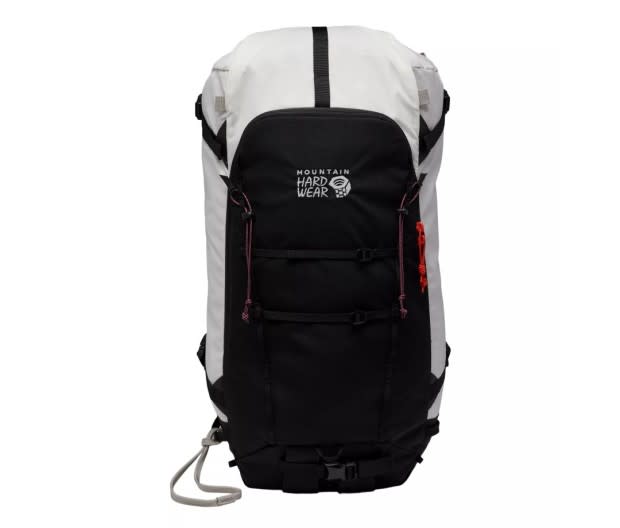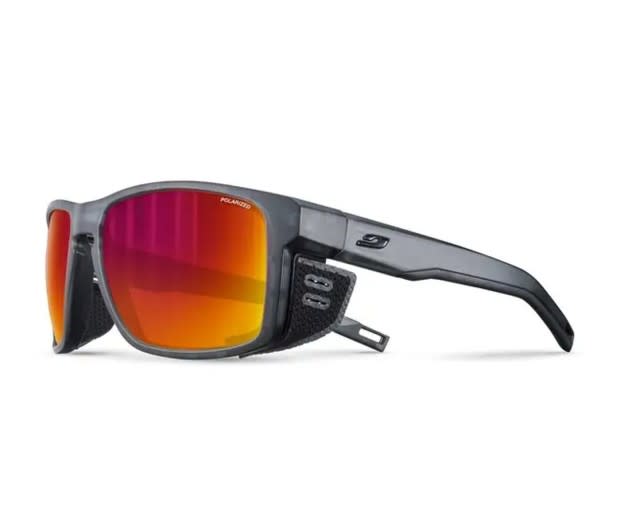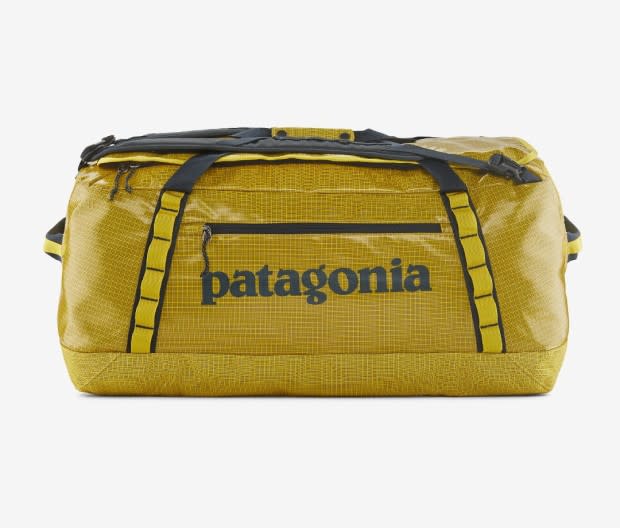All Eyes on Ausangate: A Fraught Llama-to-Ski Mission in Southern Peru
I knew we needed to get off the mountain a little after 2a.m. I couldn't sleep as a series of uncontrollable sweats and subsequent shivers racked my body. My fever was getting worse. I rolled over and looked at my partner, Jenny, who was bundled in her sleeping bag next to me.
“This has to be the worst headache of my life,” she groaned.
For a moment I felt a bit of solace, knowing I wasn’t suffering alone.
For those who haven’t experienced it—and hopefully you never will—altitude sickness is, essentially, torture and claustrophobia combined. You’re trapped in a tiny world defined by headaches, body aches, loss of appetite, vomiting, and fever, with an overwhelming feeling you’ll never find a way out. With your brain starving for oxygen, the only real solution is to descend, ideally quickly.

We fought the pain for the rest of the night, not sleeping much. By 6:30a.m. three of us were taking turns on supplemental oxygen, offering a brief hiatus from the torment. Our symptoms had worsened, making the decision easy. After packing up camp and loading gear on the llamas, we hiked down the alpine valley to a small town, found a taxi to a bigger town, and took a bus back to Cusco.
A Background on Ausangate
Five days earlier we had flown to Peru, eager to ski Ausangate, which at 20,945 feet is the highest mountain in the Cordillera Vilcanota. The little skiing that’s done in Peru is almost entirely in the Cordillera Blanca, in the north. This was a blank spot on the map, at least as far as skiing goes.
Loaded with duffels and ski bags, we stood out as dorky tourists in the airport, fielding questions from everyone, even the security guards. The next couple days were spent in the Inca capital, acclimating as best we could. Based at 11,000 feet, just walking around Cusco is quite challenging when you first arrive.
Ausangate is a sacred mountain for the Inca, known as the home of their ancestors. The region is inhabited by small llama and alpaca herding communities—one of the last pastoral societies in the world—who use a maze of trails to trade with farming communities at lower elevations. We planned to follow a popular route, the Camino del Apu, or the Road of the Gods, to a basecamp near Ausangate. This would take us to some of the biggest hanging glaciers of the high Andes, perched above the Amazon Jungle.
Heading Into the Mountains
On our third morning we were picked up by Jose Condor, the Peru program manager for Wildland Trekking, and a few other crew members. Wildland is one of the premier guiding companies in the world, specializing in hiking, backpacking, and hut-based trips on six continents, including the U.S., Australia, Bhutan, Norway, Iceland, Chile, Tanzania, Vietnam, and Peru. With a decidedly remote, complex, and challenging itinerary, we were glad to have Wildland run all of our logistics—guides, food, gear, camping, and llamas—so we could focus on skiing. This was perhaps the best decision we made all trip.
Jose, our lead guide for the eight-day trek, grew up in an alpine farming community near the Sacred Valley, a few hours outside Cusco. He's fluent in Quechua, Spanish, and English, and had been guiding for two decades. While he’s not a skier, his vast knowledge of the mountains, trekking, and safety was critical for us. He brought along Flavio Mandura, a local mountain guide who's climbed Ausangate 22 times. Together, they were the perfect pair for our ambitious skiing goals.

We left the trailhead in Pacchanta, a small mountain town on the north side of the range, around midday. Each of us were given the reins of a llama, which was carrying our respective personal gear. Learning how to work with llamas took some time. You have to be direct and assertive, while keeping the group together—llamas are social animals and don’t like to be split up. As a whole, hiking with llamas was one of the most unique experiences we had, and probably worth a trip to Peru by itself.
After a slow and steady half-day saunter—and the early onset of altitude sickness symptoms—we arrived at the edge of a glacial lake, with zero people in sight. It’s still hard to comprehend how a campsite this beautiful was totally deserted. If it was in the U.S., it would have been filled with crowds, selfie sticks, and loud noise. Our guides and porters, a collection of seven Peruvians, set up camp, while we explored the lake. When we returned, our llamas and pack horses were grazing freely on the nearby hillside.
For a few hours, momentum was on our side. After eating a delicious lomo saltado dinner and drinking a cup of coca tea, we crawled into the tents, optimistic for the days ahead. Our goal was to reach a higher basecamp the next day, then spend a few days skiing. The stretch goal was to ski off the summit, but we knew that would take everything falling into place. But, as they say, you play the hand you’re dealt. After two days stuck at basecamp, we retreated to Cusco, hoping the 4,000-foot difference would help.
Related: How to See Rainbow Mountains of Peru Minus the Crowds
A Second Effort
Feeling closer to normal two days later—albeit a nagging cough and low appetite—we made the decision to go up the mountain again, hoping the healing trend would continue. The rally took as much mental fortitude as it did physical effort, knowing nothing was guaranteed. Jose prepared the crew, food, and gear, and in a matter of hours we were off, spending a night in Pacchanta, before hiking even higher.

Arriving at a new basecamp just above 16,000, I felt a balance between confidence and concern. Mostly, I was grateful to get a second chance. Thanks to a stubborn team and a flexible support crew, we were just a thousand feet below the glacier we spent months dreaming about. With only two days left on the trip, it was now or never. Tomorrow would likely be a delicate dance between joy and suffering. Celebrating the opportunity to ski an untouched line, while, mostly likely, fighting to breathe every step of the way.
We made steady progress up the rocky moraine, climbed up the foot of the glacier with ice axes and crampons, and skinned up to a col at 17,500 feet. We didn’t move fast—no one does at elevation, especially not with lingering altitude sickness—but we used our time wisely, never stopping for long. From there, the route to the summit was steep and technical, and not something we had the faculty to try at that moment. So, we opted to turn around and enjoy the long-awaited turns we had flown to Peru to find.
The Final Descent
The ski descent was as sweet as they come—the glacial ice had flipped to corn at the right time, allowing us to hold an edge easily—and we savored every turn to the base of the glacier. Without a doubt, one of the best runs of my life. From there, it was a slow walk back to basecamp, taking us into the dark. As luck would have it, a full moon lit the trail and the support crew had a dinner waiting for us when we arrived.
Upon returning stateside, a doctor diagnosed an unknown viral infection that we likely picked up on our flights to Peru. This exacerbated the altitude sickness tenfold—he openly wondered why we even tried to ski, but that answer was easy. Sure, it was the worst headache of my life, but it was temporary. We found a way to ski above the Amazon because the group never gave up, even when logic said otherwise.
Gear We Loved in Peru

Courtesy image
The perfect ski for a trip that has no guarantees, the Citadel is both the lightest and widest ski in the Renoun line, and can hold its own on nearly any surface, from chunder and chattery ice to reasonable float in powder. I brought a pair to Peru because it’s stable, versatile, and playful on nearly any type of snow (or in this case, ice).

Courtesy image
This 40-liter dedicated ski pack from Mountain Hardwear is an ultra-lightweight bag that's a great tool for everything from mega days to multi-week trips. It combines some of the lightest and strongest materials like a CORDURA shell to handle anything the high alpine can throw at it. We found the extra volume to be quite helpful while carrying crampons, harness, rope, and other tools.

Courtesy image
A simple and stylish frame that provides all the technical ability you want while on a glacier, these sunglasses grip even while sweating. They have reactive lenses that adjust quickly to light, ventilate well, and have been my go-to tool for protecting my eyes at high altitudes for years.

Courtesy image
It doesn’t matter if you’re flying internationally, going on a quick overnight trip, or trekking with a llama, Patagonia's Black Hole Bag is still the right choice for the job. The 70-liter duffel is burly enough to handle all of it, without any visible wear and tear, and large enough to pack boots, helmets, and ski gear for a trip like this.
